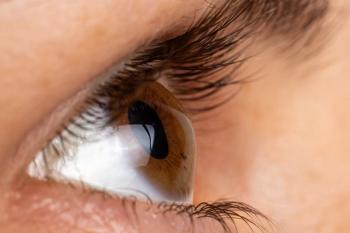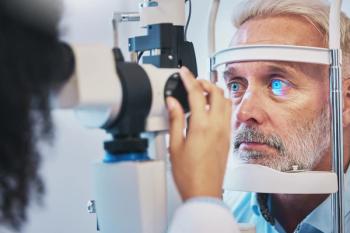
My mother, cataracts, and spectacles
"Katherine, I can't see.” Yes, yes-it was my mother calling.
"Katherine, I can't see.” Yes, yes-it was my mother calling.
Me: "What do you mean, Mom?"
Mom: "I mean I can't see."
Me: "Mom, for how long can't you see?"
Mom: "For the last 2 months, I have needed a lot more light to see and have to use a magnifier for small type. And oh, outside when it's bright there is so much glare-so I can't see in too much light either."
Me: "Mom, come to the office as it may be time to remove your ‘maturing’ cataracts."
Mom: Silence.
Thus, Mom makes her way to my office and Omni’s cataract surgeon, Douglas Grayson, is put on standby for the whirlwind-of-a-woman that is my mom.
I quickly and efficiently whisk my mother into my darkened exam room and jot down her reduced vision. I take her Ks and measure her axial length as I describe femto-assisted cataract surgery, inquiring when she was free to make it to the procedure. I perform her exam and realize that her cataracts and the balance of her exam have not significantly changed from the previous exam 6 months ago. As I lift her glasses to the light to slip them into the lensometer, I am astonished, nay flabbergasted, to see starbursts around every light as I peered through the dulled 3-year-old lenses that have had serious coating failure and a dense woods of fine scratches throughout their entire surface.
“Mom, Mom! What have you done to these lenses?”
Mom: “Why, I take very good care of them.”
Practicing in a referral practice, I spend my days working through cataracts and other ocular pathology of patients entrusted to Omni by our optometric colleagues. I am acutely aware of the tear film, “the first refracting surface of the eye,” and fastidiously focus on the nuances of corneal and lens anatomy. I, for a moment, lost sight of the fact that a patient’s spectacles are his first refracting surface.
I put my mother’s Rx in a trial frame and, as expected, her vision improved. Cataract surgery, unnecessary at this time, was tabled.
This special patient encounter was a firm reminder of the importance to include a “spectacle inspection” as part of your eye exam. I imagine many doctor-patient interviews start with a pre-screened, and perhaps dilated, patient. The patient’s glasses, clasped in her hands or in her pocket or purse, are never inspected, or considered, as the culprit of the patient’s symptoms.
Quality eyewear and expertly prescribed lenses are a part of what we do to maximize vision. Not losing sight of this is core to our professional foundation.
Lesson learned, Dr. Mastrota.ODT
Newsletter
Want more insights like this? Subscribe to Optometry Times and get clinical pearls and practice tips delivered straight to your inbox.













































